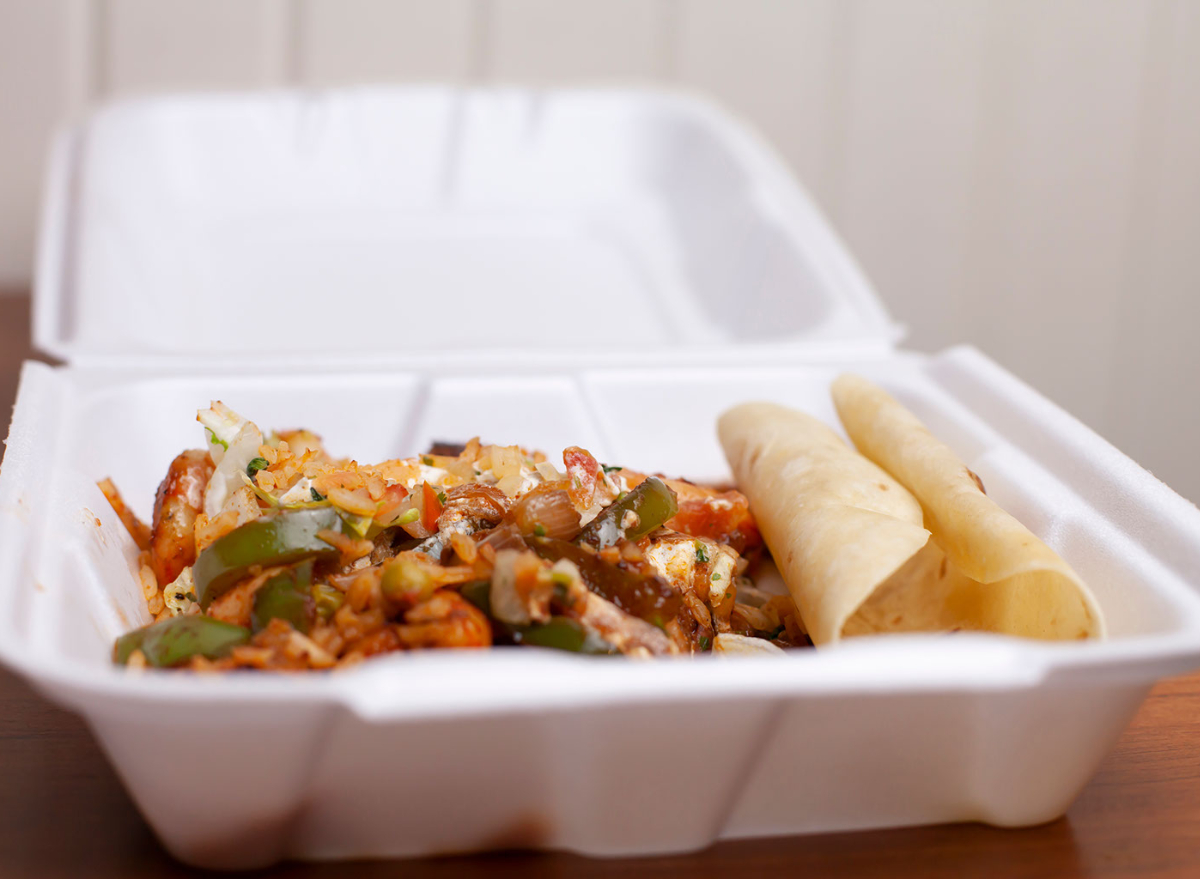The #1 Order to Never Make at a Mexican Restaurant, According to Chefs

From tacos and tortas to margaritas and barbacoa, Mexican cuisine is a rich tapestry of regional flavors, smoldering spices, molten queso, and comfort food at its most authentic. But not all Mexican restaurants take the same stringent approach to technique or culinary accuracy. Like Chinese food and Italian food, Mexican cuisine is one that can often be overly Americanized—and occasionally bastardized to the point where it becomes unrecognizable.
Whereas some restaurant genres, like seafood spots, have taboo menu items due to reasons like sustainability, most Mexican menu items earn their way onto the no-go list by way of inauthenticity. Sure, there’s no shame in a Mexican Pizza now and again, but we also don’t go to Taco Bell for its cultural accuracy. The same sentiment applies to excessively Americanized inventions like chimichangas, which are just as taboo for Mexican chefs as they are for nutritionists.
RELATED: The #1 Order to Never Make at a Burger Joint, According to Chefs
At the end of the day, whether you’re indulging or keeping it light, chefs agree that authenticity is key to having an amazing experience with Mexican food, and that faux Mexican items or menu placeholders are best avoided.
“As a chef who was born and raised in Mexico, one of the things I will never order at a Mexican restaurant is the chimichanga,” says Omar Montero. Hailing from Mexico City, the chef of Miami’s La Santa Taqueria calls the dish Americanized and inauthentic. “I am not saying the chimichanga tastes bad, but it is a dish that more often than not will not be found on the menu at an authentic Mexican restaurant, or any restaurant in Mexico.”
Instead of ordering a deep-fried burrito, the chef opts for tacos like bistec con queso, al pastor, and dry-cured meat called villamelon, which are his lifelong favorites and menu staples. “We serve all of those at La Santa and I always recommend those to guests as they are tacos I love.”
Queso is another menu item that can vary dramatically between authentic and phoned-in. According to Dafna Mizrahi, a Mexican chef from Jalisco who now lives in New York and serves as the co-founder of Curamia Tequila, there’s a wide chasm between Mexican queso and American queso. The key difference? The iron skillet.
“Queso fundido is served with freshly made corn tortillas and, more times than not, with chorizo and/or mushrooms,” she explains. “The queso fundido is served in a cast-iron pan and is usually a staple in every real Mexican restaurant!”
Basically, if queso doesn’t come in an iron skillet, that’s a sign that something is amiss—and that you may be eating Velveeta. “I grew up going to the corner stand and having tacos for meals and never in my years in Mexico did I come across a queso containing Velveeta cheese and pico de gallo,” she recalls. “Authentic queso is not yellow like Velveeta cheese, but it is white and composed mainly of Oaxaca cheese that is slowly melted to give it a creamy, thick texture.”
Another “Mexican” item to steer clear of is fajitas. While this may be a far healthier choice than, say, a chimichanga, what it delivers in diet-friendly ingredients it lacks in authenticity.
“The worst thing to order would be fajitas,” says Dariel Vazquez, regional chef of Florida’s Bodega Taqueria y Tequila. Holding no punches, he calls them “essentially as American as apple pie.” Rather, his idea of a must-try from a real-deal Mexican restaurant would be tacos al pastor or barbacoa tacos.
Food isn’t the only menu item that can teeter on sacrilege. On the beverage side of things, chefs champion the idea of fresh, flavorful, and authentic drinks that align with the cuisine.
“For any Mexican restaurant where wine is a placeholder, don’t order wine,” says Hugo Ortega, executive chef and owner of H-Town Restaurant Group in Houston, which includes Mexican heavy-hitters like Xochi and Caracol. Instead, the chef recommends ordering an agave-based drink or a beer. “Only order wine where there is a real [wine] program.”
And when it comes to agave-based drinks, fresh is best. So says Troy Guard, founder and executive chef of Denver’s TAG Restaurant Group. “When making a margarita, it’s so important to use fresh limes. You really can taste a difference in a drink when the citrus is freshly squeezed.” At his Mexican concept, Los Chingones, they use fresh orange and lime juice for all margarita variations. “The bottled margarita mix you find at the store is fine in a pinch, but using authentic and fresh ingredients makes all the difference in this case.”









